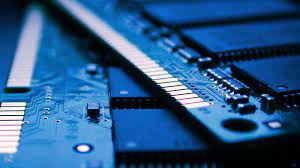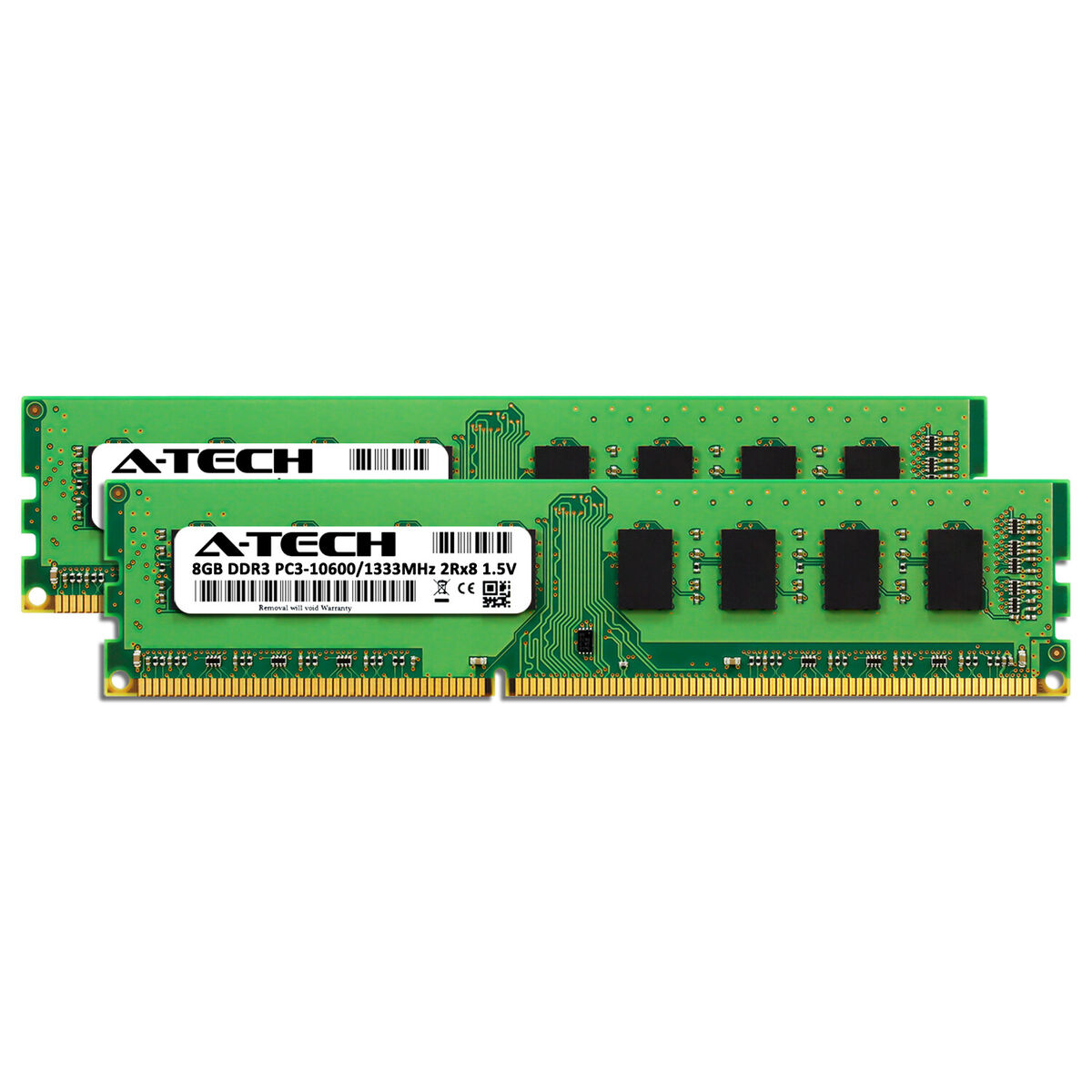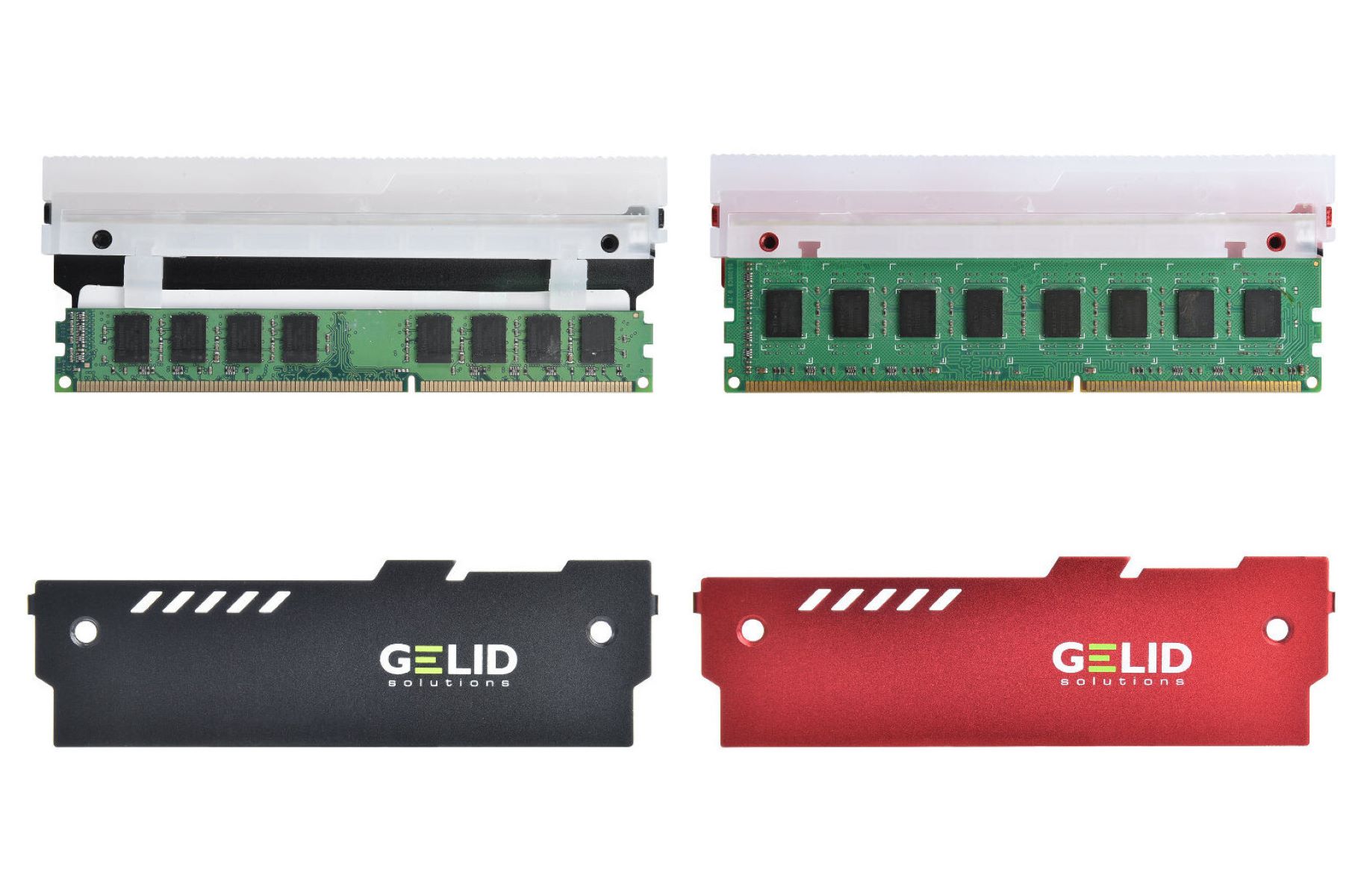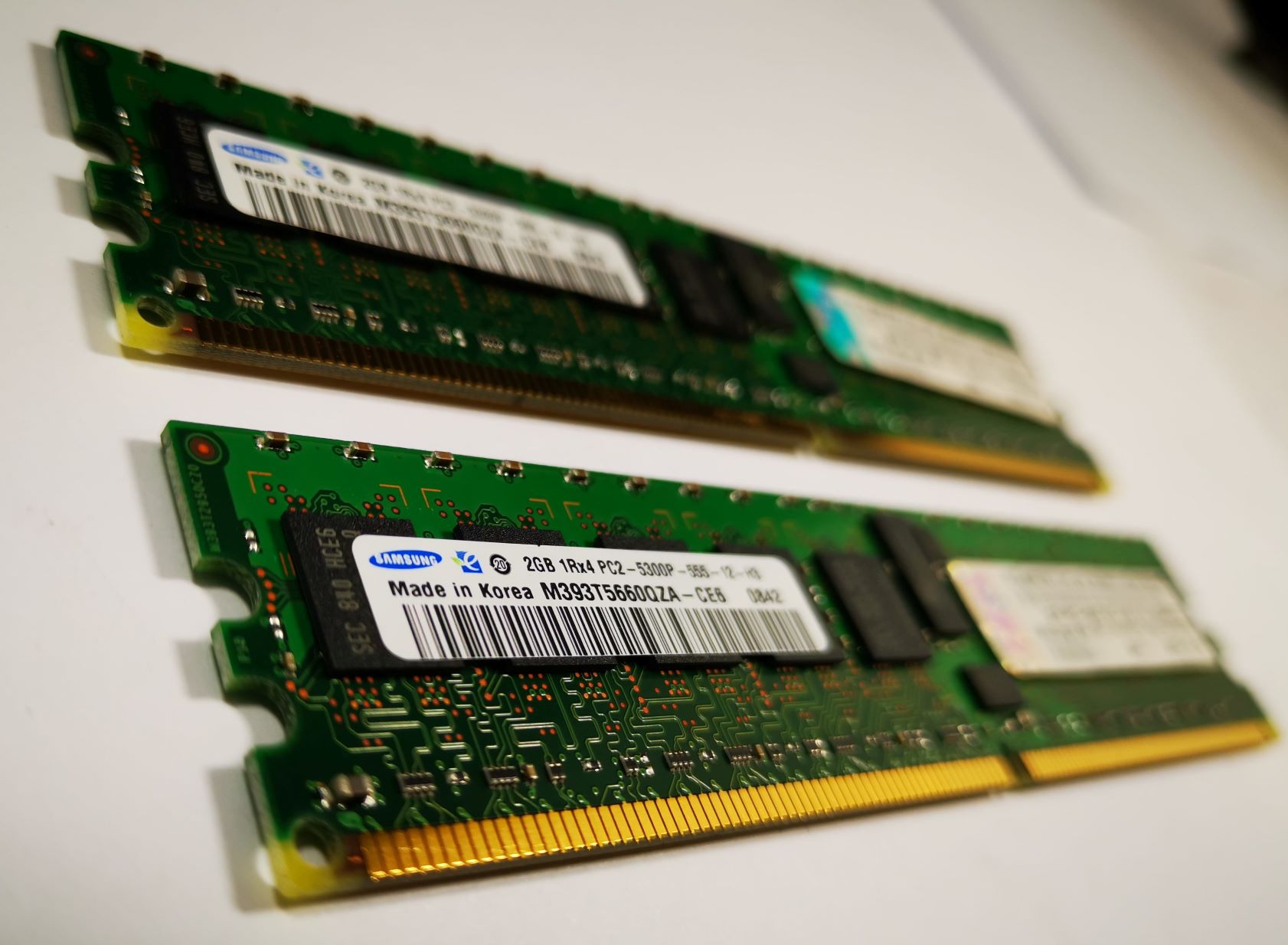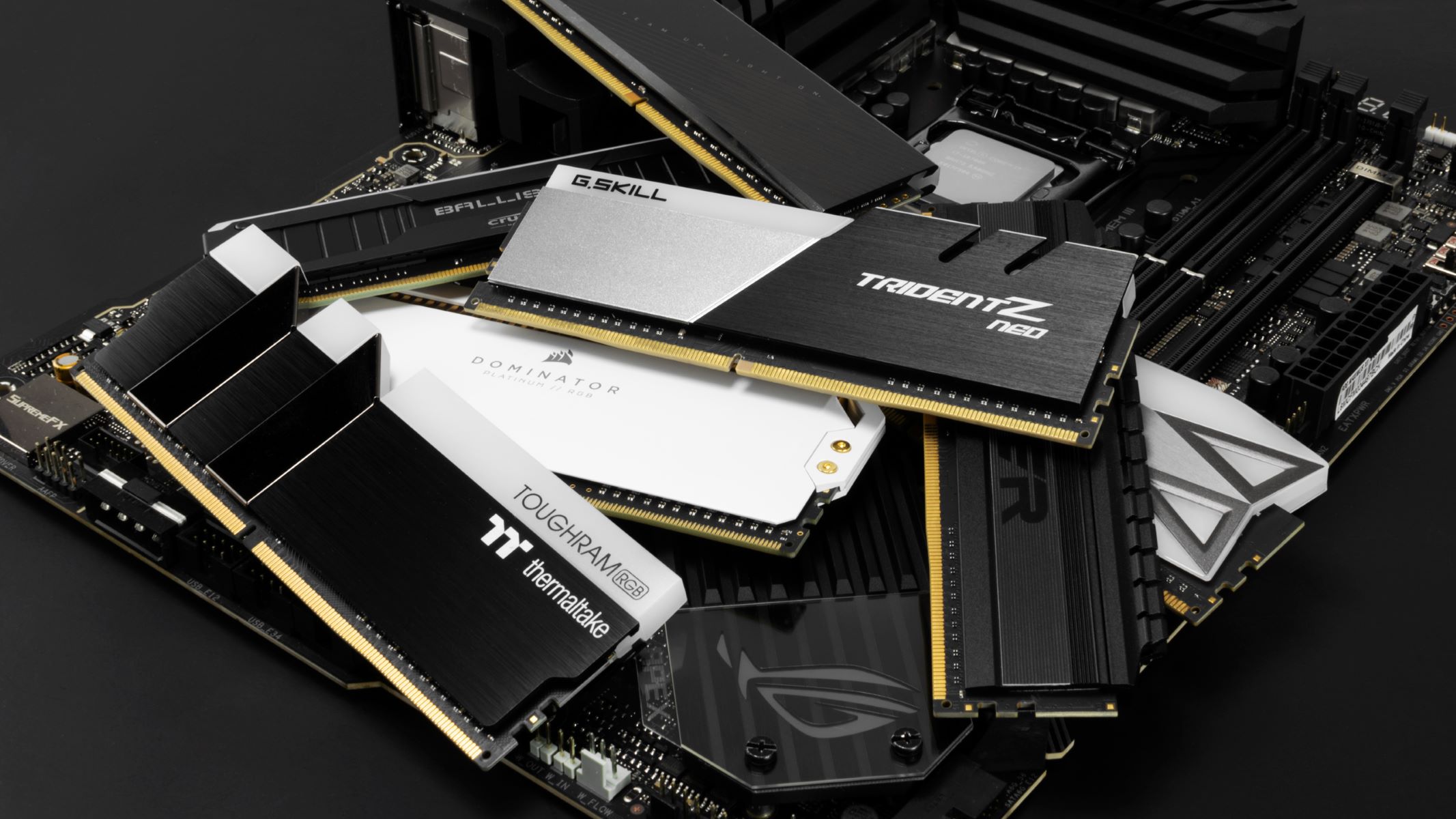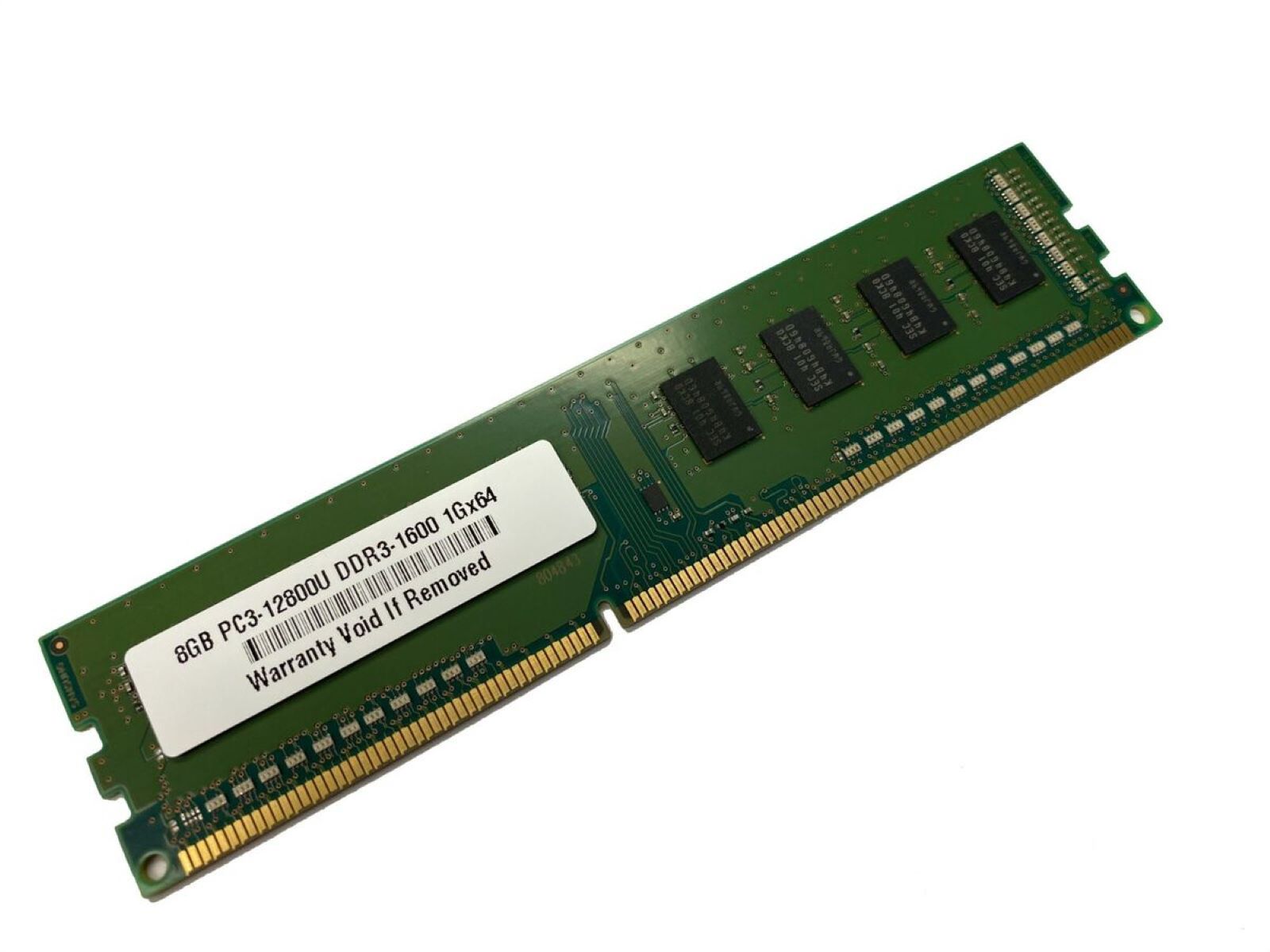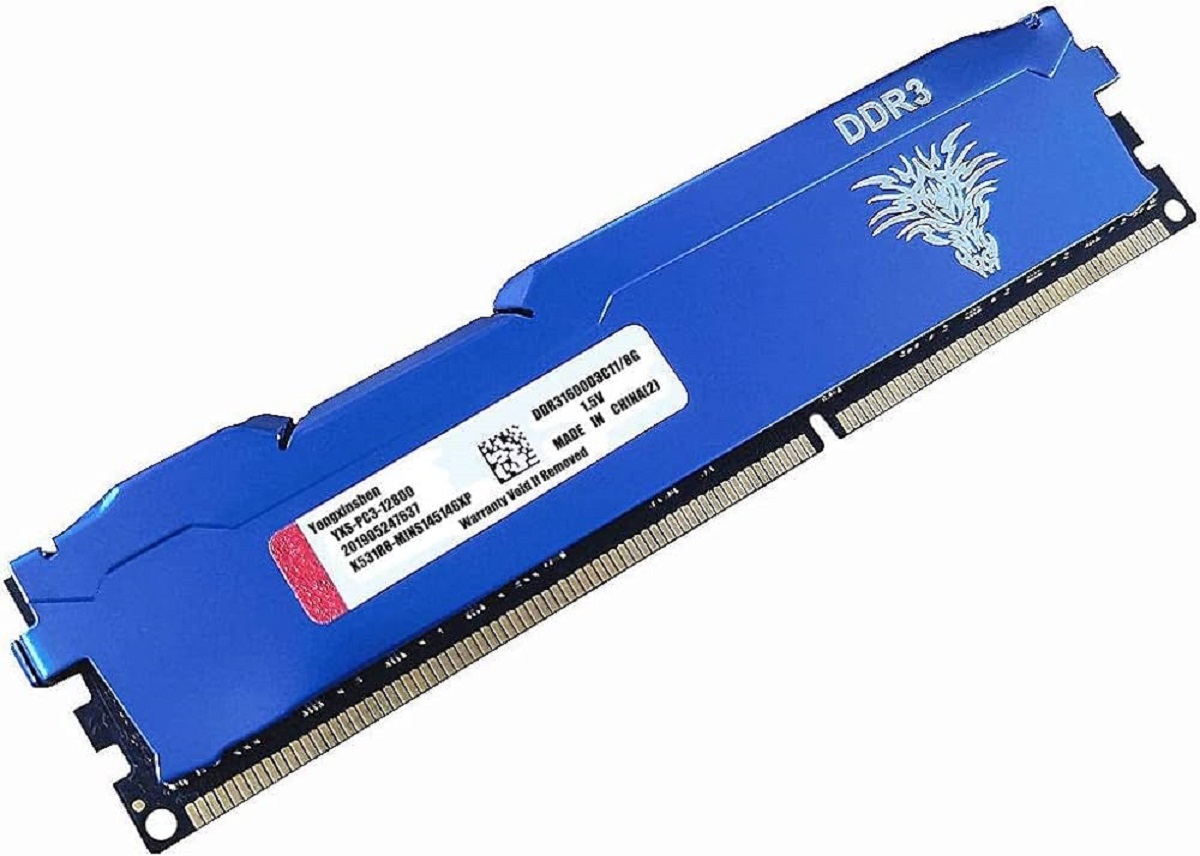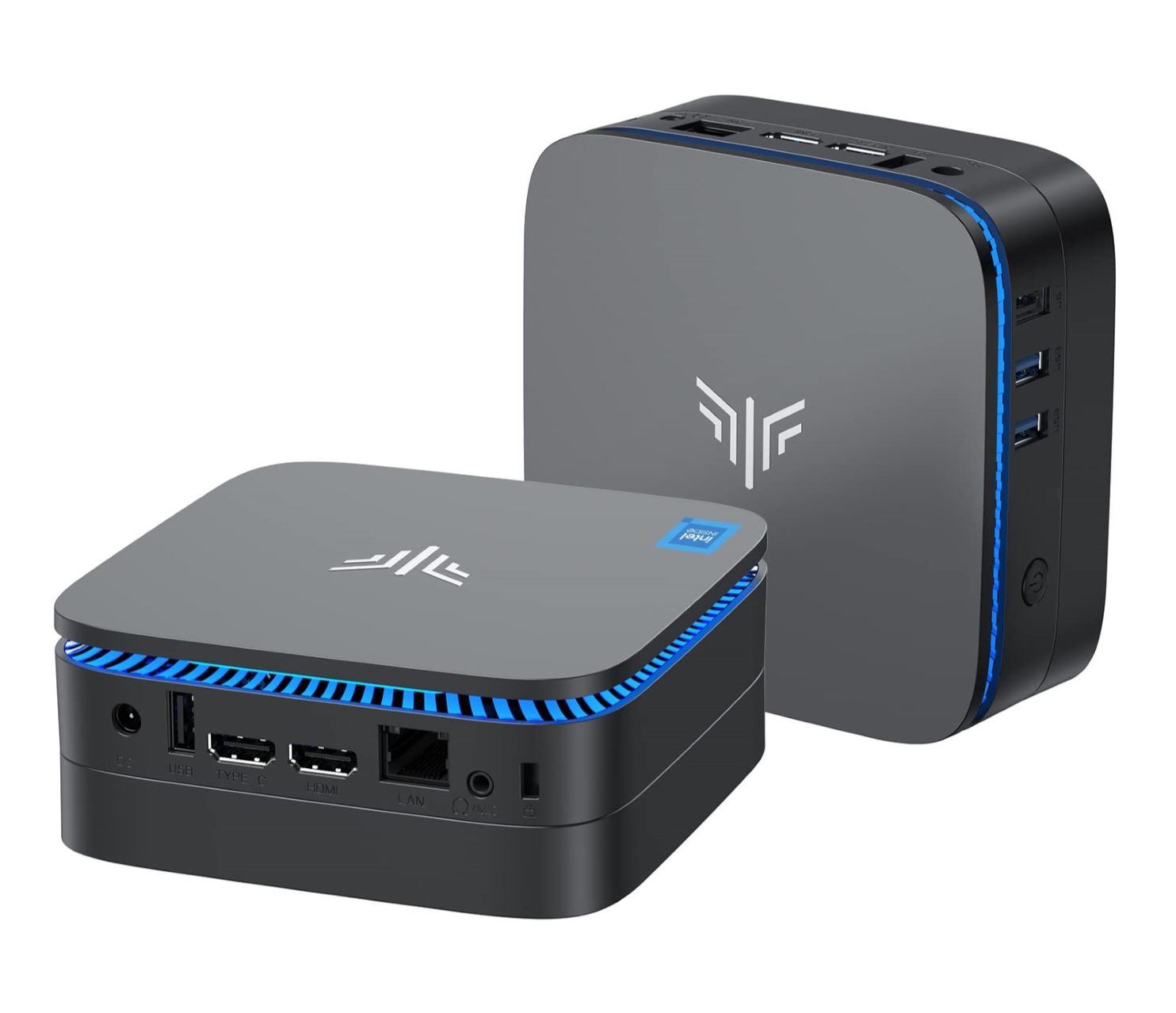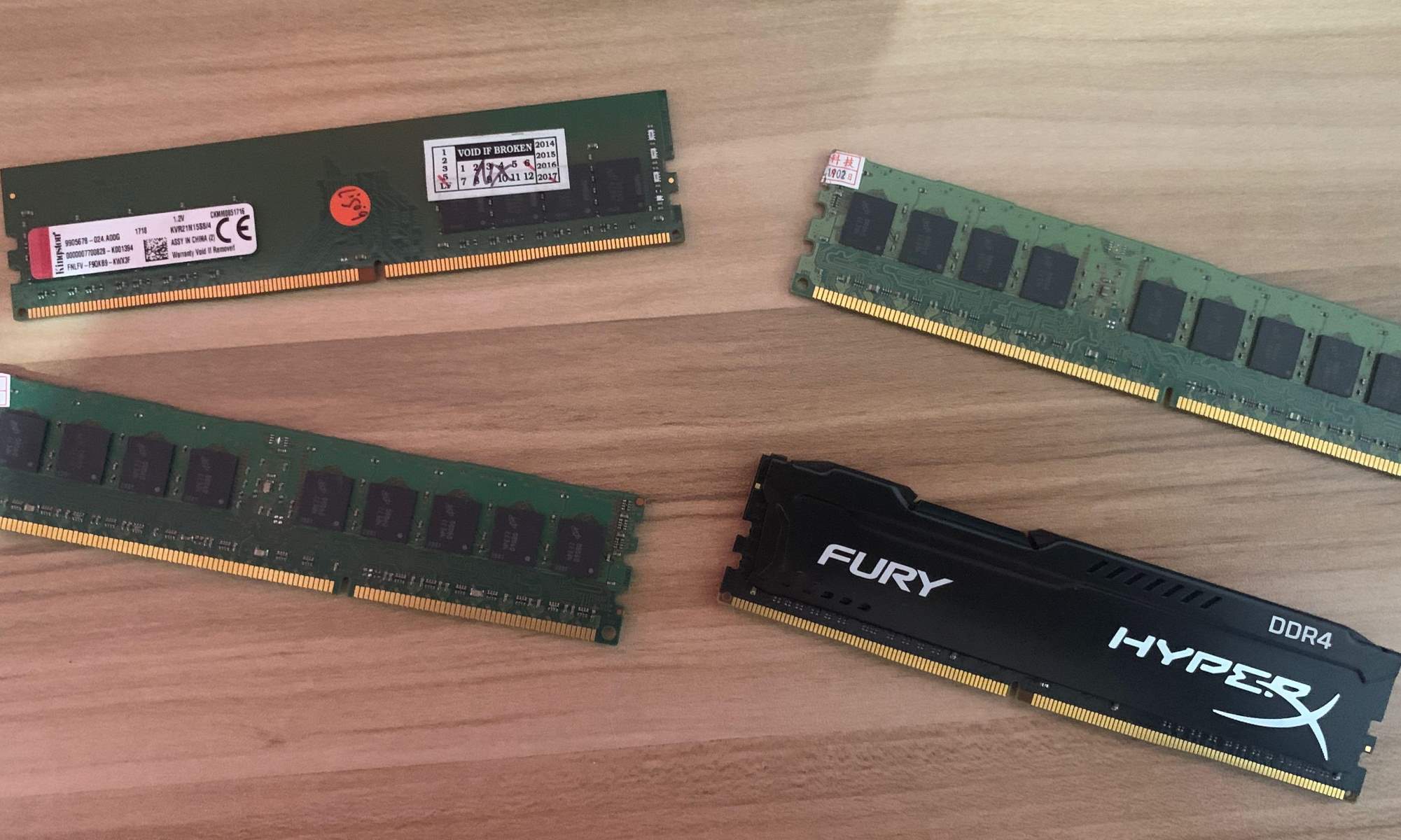Introduction
Welcome to the world of computer hardware, where every component plays a crucial role in determining the performance of a PC. One such component that often takes center stage is RAM, or Random Access Memory. Whether you’re a tech enthusiast or just a regular PC user, understanding what RAM does and how it impacts your computer’s performance is essential.
RAM serves as a vital component in any computer system, enabling it to perform tasks efficiently and effectively. In this article, we will delve into the world of RAM, exploring its definition, function, and significance in a PC.
RAM can be thought of as the short-term memory of your computer. It provides temporary storage for data that the CPU (Central Processing Unit) needs to access quickly. Unlike the long-term storage provided by the hard drive or SSD, RAM offers much faster read and write speeds, allowing for rapid data retrieval and manipulation.
To better understand the role of RAM, imagine your computer as a workspace. The CPU is the worker, and RAM is their desk. The worker needs access to specific files and tools to complete their tasks efficiently. RAM acts as the desk space where the worker places these files and tools for easy and quick access.
Definition of RAM
RAM, or Random Access Memory, is a type of computer memory that is used to temporarily store data that the CPU (Central Processing Unit) can quickly access and use. It is an essential component in any computer system, allowing for efficient and speedy data operations.
Unlike permanent storage devices like hard drives or SSDs, RAM is volatile memory, meaning it loses its data when power is cut off. This characteristic enables RAM to offer fast read and write speeds, making it ideal for storing temporary data that the CPU needs to access frequently.
RAM is often compared to a desk or workbench in an office setting. Just as a worker needs a desk to keep important files and tools within reach, RAM provides a workspace for the CPU to perform operations on data. When a program is running, it is loaded into RAM, allowing the CPU to quickly access and manipulate the necessary information.
Each piece of data stored in RAM is assigned a unique address, allowing the CPU to retrieve it rapidly. This random access capability differentiates RAM from other types of storage, such as hard drives, where data is accessed sequentially rather than randomly.
The capacity of RAM is measured in gigabytes (GB) or terabytes (TB). The more RAM a computer has, the more programs and processes it can handle simultaneously without experiencing a decrease in performance. However, it’s important to note that simply increasing RAM capacity will not speed up the computer if other components, such as the CPU or storage drive, are not up to par.
Memory Storage
RAM is an integral part of a computer’s memory hierarchy, working alongside other storage components like hard drives and solid-state drives (SSDs). Unlike these storage devices, which provide long-term storage, RAM offers temporary storage capabilities and plays a critical role in the overall performance of a computer system.
When you power on your computer, the operating system and other essential programs are loaded into RAM. This allows the CPU to quickly access the necessary data and execute instructions. The data stored in RAM is readily available for the CPU to read and write, significantly speeding up computation processes compared to accessing data from slower storage devices.
RAM is divided into memory cells, each of which is capable of storing bits of data. These cells are organized in a grid-like structure, with each cell identified by a unique address. The CPU communicates with RAM by referring to these addresses to retrieve or modify data.
One crucial aspect of memory storage in RAM is its speed. RAM modules are designed to provide fast access times, allowing the CPU to fetch data quickly and efficiently. This speed is measured in terms of the memory’s clock frequency, usually expressed in megahertz (MHz) or gigahertz (GHz).
Another factor that impacts memory storage is the memory bus, which is responsible for transferring data between RAM and the CPU. A wider memory bus allows for higher data transfer rates, enabling faster communication between the CPU and RAM.
It’s important to note that the amount of RAM in a computer directly affects the number of programs and processes that can run simultaneously. Insufficient RAM can lead to performance issues, such as slowdowns or even system crashes, as the CPU struggles to handle multiple tasks with limited temporary storage space.
Furthermore, RAM storage is volatile, meaning it requires a constant power supply to retain data. Shutting down the computer or experiencing a power outage results in the loss of all data stored in RAM. This is why it’s essential to save your work and important data to non-volatile storage, such as hard drives or SSDs, to prevent data loss.
Temporary Storage
RAM plays a crucial role in providing temporary storage for data that the CPU needs to access and manipulate rapidly. It acts as a temporary workspace, allowing the computer to efficiently process information in real-time.
When you open a program or perform a task on your computer, the relevant data is loaded into RAM from the storage drive. This temporary storage is necessary because accessing data directly from a storage drive like a hard drive or SSD is much slower in comparison.
One of the primary advantages of using RAM for temporary storage is its fast read and write speeds. RAM can deliver data to the CPU at a rate that exceeds the capabilities of storage drives, resulting in quicker data retrieval and processing.
For example, when you open a web browser, the browser program will be loaded into RAM along with the necessary web page content. This allows for faster and smoother browsing experiences as the CPU can quickly access and render the web page’s data directly from RAM.
Additionally, RAM serves as a buffer for the data being transferred between different components of the computer. When you copy or move files, data is temporarily stored in RAM before being written to another storage device. This temporary storage helps to ensure smooth and uninterrupted data transfers.
The temporary nature of RAM storage is advantageous in scenarios where data needs to be accessed frequently but does not require long-term retention. For example, when you edit a photo or video, the application stores the temporary modifications in RAM, allowing for quick preview and real-time editing capabilities.
It’s worth noting that RAM is volatile memory, meaning it requires a constant power supply to retain data. As soon as the power is cut off, the data stored in RAM is lost. This is why it’s vital to save your work frequently to non-volatile storage devices, such as hard drives or SSDs, to prevent data loss.
In summary, RAM serves as a temporary storage solution that provides fast access times for data needed by the CPU. Its ability to quickly read and write data is crucial for real-time tasks and ensuring smooth and efficient operation of computer applications.
Speed and Performance
RAM plays a crucial role in determining the speed and overall performance of a computer system. The speed at which data can be read from and written to RAM directly impacts how quickly and efficiently your computer can execute tasks and run applications.
One of the primary factors influencing the speed of RAM is its access time or latency. Access time refers to the time it takes for the CPU to retrieve data from a specific location in RAM. Lower latency means faster access times and, therefore, faster data retrieval and processing.
The clock speed of RAM modules also contributes to their performance. The clock speed, measured in megahertz (MHz) or gigahertz (GHz), determines how quickly the RAM can send and receive data. Higher clock speeds result in faster data transfer rates, improving overall system performance.
Another factor to consider is the data transfer rate or bandwidth of the RAM. The bandwidth determines how much data can be transferred between the RAM and the CPU in a given period. Higher bandwidth allows for more data to be processed simultaneously, leading to quicker execution of tasks and improved multitasking capabilities.
Furthermore, the amount of RAM in a computer system plays a significant role in its overall performance. Insufficient RAM can lead to performance bottlenecks, especially when running memory-intensive applications or multitasking. With limited RAM capacity, the system may rely on slower storage devices, such as hard drives or SSDs, for temporary data storage, resulting in slower performance and potential system slowdowns.
Upgrading the amount of RAM in your computer can have a noticeable impact on its performance, particularly when you frequently work with resource-intensive applications or engage in multitasking. By increasing the available RAM, you provide more temporary storage space for the CPU to work with, reducing the need for data swapping and improving overall responsiveness.
It’s important to note that while RAM can greatly improve system performance, it is not the sole factor affecting a computer’s speed. Other components, such as the CPU, storage devices, and the overall system architecture, also play crucial roles in determining overall performance.
In summary, RAM speed and performance are influenced by factors such as access time, clock speed, and bandwidth. Upgrading the amount of RAM can significantly enhance a computer’s performance, especially when working with memory-intensive applications or engaging in multitasking.
Importance of RAM Capacity
The capacity of RAM, measured in gigabytes (GB) or terabytes (TB), is a crucial factor in determining the overall performance and capabilities of a computer system. Having an adequate amount of RAM is essential for smooth multitasking, running memory-intensive applications, and ensuring optimal system performance.
One of the primary advantages of having sufficient RAM capacity is the ability to run multiple applications simultaneously without experiencing a noticeable decrease in performance. Each application requires a certain amount of RAM to operate efficiently. Insufficient RAM can lead to increased data swapping between RAM and slower storage devices, resulting in system slowdowns and reduced responsiveness.
When you have enough RAM, your computer can keep a larger portion of the frequently accessed data readily available, reducing the need for constant data swapping. This allows the CPU to quickly access the necessary information, resulting in faster program loading times, smoother multitasking, and improved overall user experience.
Memory-intensive applications, such as video editing software, graphic design tools, and gaming applications, require a significant amount of RAM to run smoothly. Insufficient RAM can lead to laggy performance, rendering issues, and increased loading times. By upgrading the RAM capacity, you provide these applications with the necessary temporary storage space, enabling them to operate at their full potential.
Another important consideration is the operating system’s requirements. Modern operating systems, along with background processes and system services, use a portion of the available RAM. Insufficient RAM capacity can lead to system resource constraints, slowing down the entire computer and affecting overall performance.
Additionally, having more RAM allows for better caching of data, improving system performance. Frequently accessed files and data can be stored in RAM, allowing for faster access and reducing the reliance on slower storage devices.
It’s important to note that the optimal RAM capacity for a computer system depends on individual usage requirements. While 8GB is generally considered a minimum for most everyday computing tasks, more RAM may be needed for demanding applications and intensive workloads. For gamers, content creators, and professionals working with high-resolution media, 16GB or even higher configurations are recommended for optimal performance.
In summary, the capacity of RAM is integral to a computer’s performance and capabilities. Adequate RAM allows for smooth multitasking, running memory-intensive applications, and improves overall system responsiveness. It is essential to assess individual usage requirements to determine the optimal RAM capacity for your specific needs.
Types of RAM
When it comes to RAM, there are several different types available in the market, each with its own set of characteristics and features. Understanding the different types of RAM can help you make informed decisions when upgrading or purchasing RAM for your computer system.
1. DRAM (Dynamic Random Access Memory): DRAM is the most common type of RAM used in computers. It requires constant refreshing of data to retain information and operates at a higher latency compared to other types of RAM. DRAM is further categorized into DDR (Double Data Rate) versions, such as DDR3, DDR4, and the latest DDR5, each offering improved data transfer rates and efficiency.
2. SRAM (Static Random Access Memory): SRAM is a faster and more expensive type of RAM compared to DRAM. It does not require refreshing like DRAM and is known for its high-speed data access and low latency. SRAM is commonly used in cache memory and specific high-performance applications where speed is paramount.
3. SDRAM (Synchronous Dynamic Random Access Memory): SDRAM is a synchronized version of DRAM that operates at the same speed as the system bus. It offers improved performance compared to traditional DRAM and is commonly used in desktop computers and servers.
4. DDR (Double Data Rate) RAM: DDR RAM is an evolution of SDRAM and provides faster data transfer rates. DDR RAM is further categorized into DDR2, DDR3, DDR4, and DDR5, with each iteration offering enhanced performance and efficiency. DDR RAM is widely used in consumer computers, laptops, and servers.
5. ECC (Error-Correcting Code) RAM: ECC RAM is a type of RAM that uses advanced error-checking and correcting codes. It is primarily used in servers and mission-critical systems where data integrity is crucial. ECC RAM can detect and correct errors in real-time, ensuring reliable operation under demanding conditions.
6. Registered/Buffered RAM: Registered or buffered RAM regulates the signals between the memory controller and the RAM modules. It improves stability and allows for larger RAM configurations by reducing the electrical load on the memory bus. Registered RAM is commonly used in servers and workstations.
7. Non-ECC Unbuffered RAM: Non-ECC unbuffered RAM is the standard consumer-grade RAM commonly used in desktop computers and laptops. It offers a balance of performance and affordability and does not include advanced error-checking and correcting features.
It’s crucial to ensure compatibility between the RAM type and your computer’s motherboard. Different RAM types have different physical and electrical characteristics, and not all motherboards support every RAM type. Consulting your computer’s documentation or the manufacturer’s specifications is recommended when upgrading or purchasing RAM.
In summary, there are various types of RAM available, including DRAM, SRAM, SDRAM, DDR RAM, ECC RAM, registered/buffered RAM, and non-ECC unbuffered RAM. Each type has its own performance characteristics and is designed for specific applications and systems.
Upgrading RAM
Upgrading the RAM in your computer can be a cost-effective way to improve its performance and handle more demanding tasks. Whether you’re experiencing slow system speeds or regularly running out of memory, increasing the RAM capacity can help alleviate these issues and enhance your overall computing experience.
Before upgrading your RAM, it’s important to determine the maximum capacity and type of RAM that your computer’s motherboard can support. Referencing your computer’s documentation or contacting the manufacturer’s support can provide the necessary information. Additionally, check if there are any restrictions in terms of the number of RAM slots or the maximum RAM speed supported.
There are a few key points to consider when upgrading your RAM:
1. Selecting the Right RAM Type: Ensure compatibility between the existing RAM and the new RAM modules. Match the type, speed, and voltage recommendations to maximize compatibility. For example, if your computer has DDR3 RAM, upgrading to DDR3 modules would be the best choice.
2. Choosing the Right RAM Capacity: Assess your usage requirements to determine the appropriate RAM capacity. Consider the types of applications and tasks you regularly perform. For casual usage, 8GB to 16GB of RAM is generally sufficient. However, for demanding tasks like video editing or gaming, 16GB or more may be necessary for optimal performance.
3. Installing RAM Modules: Install the new RAM modules properly into the available slots. Ensure that the computer is powered off, unplugged, and grounded to prevent any electrostatic discharge. Follow the manufacturer’s instructions for installation, such as proper seating and module orientation.
4. Matching RAM Speed: If you’re adding new RAM modules alongside the existing ones, ensure that the speed of all the modules matches. Mismatched speeds may result in the RAM running at the speed of the slowest module, potentially reducing performance gains.
5. Updating BIOS: In some cases, a motherboard may require a BIOS update to properly recognize and utilize new RAM modules. Check the motherboard manufacturer’s website for any available updates and follow the instructions to update the BIOS if necessary.
After upgrading the RAM, you should notice an improvement in your computer’s performance, especially in multitasking, running memory-intensive applications, and overall system responsiveness. Programs will load faster, and you’ll be able to navigate between tasks with greater efficiency.
Keep in mind that upgrading RAM alone may not solve all performance issues. Other factors, such as the CPU, storage drive, and overall system configuration, also contribute to overall performance. Therefore, it’s essential to consider the entire system’s balance when seeking performance improvements.
In summary, upgrading the RAM in your computer can boost performance and allow for smoother multitasking and improved efficiency. Consider the compatibility, capacity, and type of RAM when making your selection, and follow the proper installation procedures for optimal results.
Conclusion
RAM, or Random Access Memory, is a critical component in any computer system, playing a vital role in overall performance and functionality. It serves as the temporary storage for data that the CPU needs to access quickly, enabling efficient task execution and enhancing user experience.
Throughout this article, we have explored the definition of RAM and its function in storing and accessing data. We discussed how RAM provides temporary storage and acts as a workspace for the CPU. We also examined the importance of RAM capacity in determining a computer’s multitasking capabilities and its ability to handle memory-intensive applications.
Furthermore, we delved into the various types of RAM available, such as DRAM, SRAM, SDRAM, and DDR RAM, understanding their unique characteristics and purposes. We also highlighted the process of upgrading RAM, considering factors such as compatibility, capacity, and proper installation procedures.
Upgrading the RAM in your computer can have a significant impact on performance, especially when handling memory-demanding tasks or engaging in multitasking. Adequate RAM capacity allows for smoother operation, quicker program loading times, and enhanced overall system responsiveness.
However, it’s essential to consider that RAM is just one component of the entire system, and other factors like the CPU, storage drives, and overall system configuration also contribute to overall performance. A well-balanced combination of these components ensures optimal functionality and user experience.
In conclusion, RAM serves as the short-term memory of a computer, providing fast and temporary storage for data that the CPU needs to access quickly. Understanding the function and importance of RAM allows for informed decisions when it comes to upgrading or purchasing RAM, ultimately enhancing the performance of your computer system.







